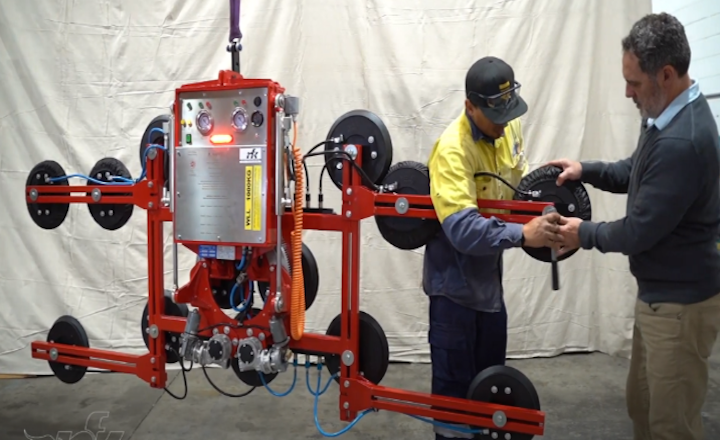
Prior to the utilisation of a hydraulic vacuum lifter for glass at any workplace, it is imperative to conduct a thorough inspection to guarantee its operational safety. Ensuring the equipment is in optimal condition is crucial, and it is equally important that operators and maintenance personnel are well-trained in its usage and maintenance. Here are the key points outlining NFK Glazing & Industrial Supplies’ approach with hydraulic vacuum lifters.
Risk Categorization:
We categorise risks into three main groups based on the intersection of likelihood and consequences: High, Medium, and Low. This comprehensive approach enables us to address potential hazards effectively.
High-Risk Assessment:
Crushing: Evaluating the risk of injuries caused by unexpected movements, falling loads, uncontrolled plant movements (such as tipping or rolling), or contact with moving parts.
-
Entanglement: Assessing the possibility of clothing, gloves, tools, or other materials becoming entangled with moving parts.
-
Cut, Stab, Puncture: Examining the risk of injuries from contact with sharp objects, moving parts, or equipment disintegration.
-
Loss of Power/Operating Performance: Ensuring fail-safe systems are in place to manage the plant item in the event of power failure.
-
Electrical: Identifying potential injuries from live wires, overloaded circuits, or poorly maintained equipment.
-
Misc. Hazards: Verifying adherence to manufacturer-specified hazards in the Operator’s Manual, crucial for untrained operators.
Medium-Risk Assessment:
Striking (Impact): Evaluating the risk of injuries due to uncontrolled movement or equipment disintegration.
-
Shearing: Assessing the risk of injuries from two moving parts or entrapment between a fixed object and a moving part.
-
Plant Transportation: Ensuring designated lifting points, tie-down points, and assessing the need for specialised skills for safe load movements.
Low-Risk Assessment:
Addressing 13 low risks, including environmental factors, isolation and lockout procedures, noise and vibration, plant item stability, adverse weather conditions, high-pressure fluid, high temperature or fire, explosion, friction, abrasion, tearing, slip, trip, and fall.
Legal Compliance:
In alignment with relevant Australian state and territory health and safety acts, regulations, and codes of practice, it is mandatory for plant owners, employers, and operators to exercise a duty of care in the safe operation and maintenance of hydraulic vacuum lifters https://www.nfk.com.au/Glass-Lifting-Transport-Storage/Glass-Vacuum-Lifters/pl.php.
Therefore, a meticulous inspection and adherence to safety standards are imperative before the equipment is supplied or used at any workplace.
| < Prev | Next > |
|---|




